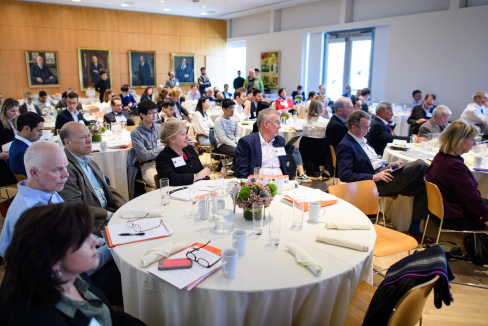- One wedge will be from residential sector.
- The other wedge will be from commercial sector.
- The largest carbon savings are in space heating and cooling, water heating, lighting, and electric appliances.
Comments
The 2001 “Mitigation” report of the Intergovernmental Panel on Climate Change (IPCC) contains historical data and projections across all economic sectors and levels of industrial development. The report cites a 1996 paper commissioned by the IPCC that judges the buildings sector as a whole to have the “technological and economic potential” to cut emissions in half, relative to a particular base case, from 3.9 GtC/y to 2.0 GtC/y. Thus, two wedges are achieved. One wedge is achieved in residential and another in commercial buildings. In the base case, two-thirds of the carbon emissions are from residential buildings, but the carbon savings achievable from commercial buildings are judged to be larger than from residential buildings (65% vs. 45%).
In both the residential and commercial buildings, almost half of the savings are achieved in the buildings of developing countries (S25, Table 3.5, p. 189). The paper cautions, however, that only “between 35% and 60% of the efficiency measures that are technically and economically feasible… could be adopted in the market through known and established approaches (S25, p. 188, fn. 13).”
We can read this observation in either of two ways, depending on how we view Business As Usual.
- We can judge the savings available using “known and established” approaches as sufficiently difficult to achieve that they would not occur as part of Business As Usual. Then, one wedge would be available through implementing these approaches, and a second wedge would be available if unknown and not yet established approaches could be implemented to bring about the second half of the identified technical potential for carbon savings.
- We can view the savings through “known and established” approaches to be part of Business As Usual, and thus very likely to occur without a focus on carbon. In that case, only the second wedge above would be available.
Carbon savings from space water heating will come from synergisms between end-use efficiency strategies, like wall and roof insulation, and renewable energy strategies, like solar water heating and passive solar design.
There are often critical interactions between two strategies that diminish the combined effect, relative to the sum of the two activities acting independently. Consider household lighting and the decarbonization of electricity.
A wedges calculation could distinguish two 2054 worlds, one with half and one with full displacement of incandescent bulbs (IBs) with compact fluorescent bulbs (CFBs). About 10 kgC/y is at stake for each fixture, if we assume: 1) the bulbs are on 4 hrs/day; 2) a 15W CFB replaces a 60W IB, providing the same light output; and 3) the carbon intensity of electricity is 160 gC/kWh, the same as in recent years1. If we imagine 50 billion light fixtures in 2054 (there are about 10 billion today), half versus full penetration would be one-fourth of a wedge (25 billion fixtures where 10 kgC/y is saved). But, less than one-fourth of a wedge will be available, to the extent that the carbon intensity of electricity falls by 2054 from its current value.
The carbon intensity of electricity fell 28% over the 29 years between 1971 and 2000, from 204 gC/kWh to 159 gC/kWh, or 0.9%/y (S24, p. 411 and 413). One would expect substantial further reductions in the carbon intensity of electricity in a world where global carbon is taken very seriously.



